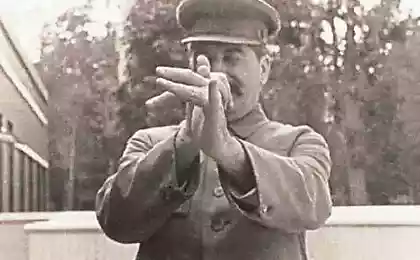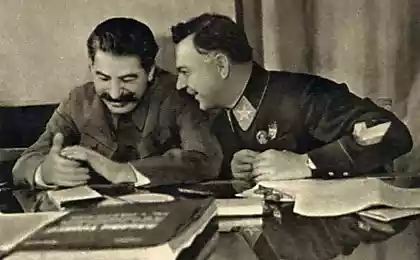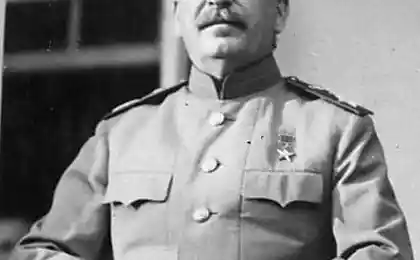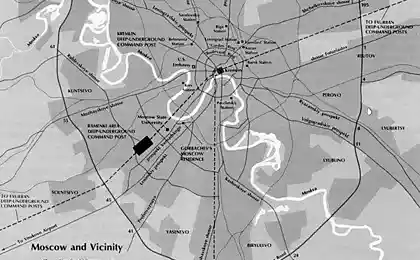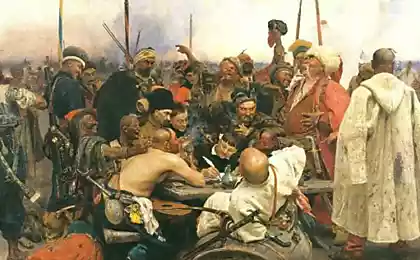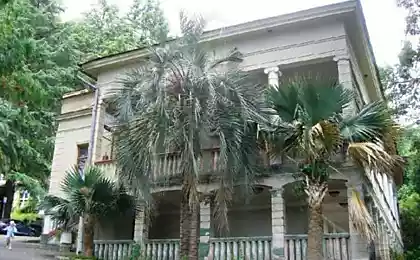1346
The final blow Stalin
In printing the document called the "Great Plan for the Transformation of Nature».
Which has no analogues in the world fifteen program of scientific control of nature, inspired by the works of prominent Russian agronomists.
According to the plan to transform nature, began a big offensive drought by planting of forest plantations, the introduction of grass crop rotation, construction of ponds and reservoirs. The strength of this plan was a single will, complexity and scale. The plan had no precedent in international experience in scale.
According to this, the majestic plan for 15 years will be created 8 large state shelterbelts total length of 5,300 kilometers, in the fields collective and state farms will be set up protective plantations with total area of 5.709 hectares and by 1955 the farms will be built 44,228 ponds and reservoirs . All this combined with advanced Soviet cultural practices ensure high and stable, independent of the vagaries of the weather crops over an area of 120 million hectares. Crop harvested this acreage, enough to feed half the world's population. The centerpiece of the plan took a field-protective afforestation and irrigation.
The newspaper "Washington Post" in 1948. quotes the director general of the United Nations for Food and Agriculture Boyd Orr, who said: "The rate of depletion of fertile soil in the United States are alarming. Approximately one quarter of the area originally occupied by arable land already devastated. Every year in this country destroyed three million tons of fertile top soil layers. " Further, the newspaper admits: "If the Cold War turned into a protracted conflict, the advances in respect of reclamation can solve the question of who will be the winner».
Few people know that the preparation for the adoption of this ambitious project was preceded by a 20-year-old practice in Astrakhan semidesert, where literally, from scratch, in 1928. Research Station was founded All-Union Institute of agroforestry, called Bogdinsko reference point. In this dying steppe, overcoming great difficulties, scientists and foresters with his hands planted the first hectares of young trees. This is where hundreds of varieties of trees and shrubs were selected tree species satisfying scientific developments and Dokuchaeva Kostychev for Russian natural conditions.
The forest has grown! If the open steppe heat reaches 53 degrees, the shade of the trees on 20% cooler soil evaporation is reduced by 20%. Observations in Buzuluk forestry winter 28-29gg showed that pine height of 7, 5metra gathered this winter 106 kg of frost and frost. This means that a small grove is able to "extract" from the precipitation of moisture a few tens of tons. On the basis of scientific knowledge and experimental work and was accepted this grand plan. One of the scientists was Vysotsky and GN Academician of the Academy of Agricultural Sciences, who has studied the impact of forests on the hydrological regime. First to calculate the balance of moisture under the forest and field, studied the effect of forest habitat and causes treeless steppes. And made a significant contribution to the steppe afforestation
The farmers and workers of forestry enterprises procured 6,000 tons of seeds of trees and shrubs. Interesting rock composition proposed by Soviet scientists: first row - Canadian poplar, linden; second row - ash, maple Tatar; third row - oak, yellow acacia; fourth row - ash, maple holly; fifth row - Canadian poplar, linden; sixth row - ash, maple Tatar; seventh row - oak, yellow acacia ... and so on, depending on the bandwidth of the bushes - raspberry and currant that will attract birds to control pests plantations.
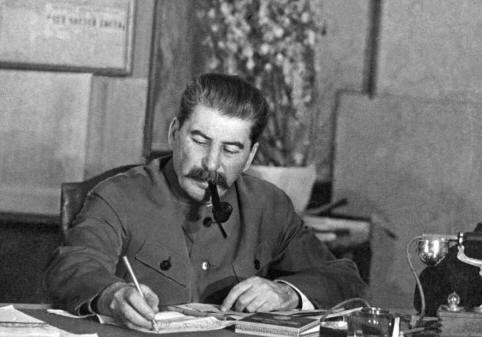
Fig. Great Plan for the Transformation of Nature.
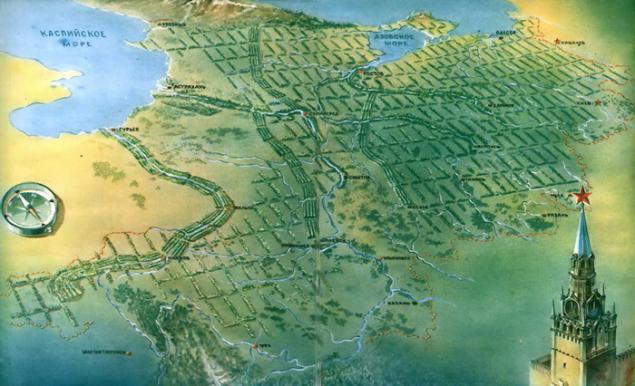
The purpose of this plan was to prevent drought, sand and dust storms by building reservoirs, planting of forest plantations and the introduction of grass crop rotation in the southern regions of the USSR (the Volga region, Western Kazakhstan, the North Caucasus, Ukraine). Total planned to plant more than 4 million. Ha of forest, and restore forests destroyed by the last war and negligent management.
State band had to protect the field from the hot south-easterly winds - hot winds. In addition to the state forest shelterbelts were planted shelterbelts local perimeter of individual fields on the slopes of ravines, along the already existing and newly created bodies of water in the sand (for the purpose of fixing). In addition to introduce more advanced methods of processing fields: the use of black vapor, plowed fields and stubble breaking; regular system of organic and mineral fertilizers; sowing the seeds of selected high-yielding varieties adapted to local conditions.
The plan also includes the introduction of grass farming system developed by outstanding Russian scientist Dokuchaev, Kostychev and VR Williams. Under this system, a part of arable crop rotation inoculated legumes and perennial grasses Poa. Herbs were fodder for livestock and natural means of restoring soil fertility. The plan called for not only the absolute food itself providing the Soviet Union, but also build the second half of the 1960s, exports of domestic grain and meat products. By forest belts and ponds were significantly diverse flora and fauna of the USSR. Thus, the plan combined the objectives of environmental protection and sustainable produce high yields.
Great help in disqualification runs under state protection strips, in the preparation of technical projects for the deployment of planted forests in the state and collective farms, as well as the establishment of industrial oak forests in the southeast had scientists.
In this work, organized under the overall supervision of the Academy of Sciences of the USSR, was attended by scientists over 10 scientific institutions of the USSR Academy of Sciences, Moscow and Leningrad University, 4-5 departmental research institutes, more than 10 special forest and agricultural educational institutions in Moscow, Leningrad , Saratov, Voronezh, Kiev, Novocherkassk.
In order to ensure broad mechanization of field and forest work and improve their quality in terms of was, require the Department of Agricultural Engineering, Ministry of automobile and tractor industry, the Ministry of Transport Engineering, Ministry of Construction and Road machinery and other industrial ministries with orders for agriculture, provide unconditional implementation of the established plan of production of agricultural machinery, high quality and faster development of new improved agricultural machinery and implements.
Machines have been developed for the simultaneous seven lane planting trees instead of horse-driven cultivators, for the first time, work was begun on the creation of mini tractors to work on logging sites (called - a walking tractor "TOP", with the motor 3 hp). For irrigation of vegetable crops - sprinklers KDU with independent motor. Already passed the test domestic appliances - for cleaning grain, cotton, flax, sugar beet and potatoes
For the development and implementation plan was established institute "Agrolesproekt" (now Institute Rosgiproles). In his project forests covered four major watershed of the Dnieper, Don, Volga, Urals, European Southern Russia. Execution of tasks has become a matter of the whole people. At the same time polezashchitnym afforestation had to take measures to preserve and improve high-value forests, including Shipov forest Hrenovskoy boron Borisoglebskii forest, Tula spotted, Black Forest in the Kherson region, Velikoanadolskiy forest Buzuluksky boron. Restored plantations destroyed during the war, destroyed parks.
Simultaneously with a system of shelterbelts was launched a large program to build irrigation systems. They would dramatically improve the environment, build a large system of waterways, to settle the many rivers flow, to receive a huge amount of cheap electricity use stored water for irrigation of fields and gardens.
To solve the problems associated with the implementation of the five-year plan of reclamation work, was brought Institute of Water Resources Engineers named VR Williams.
However, with the death of Stalin in 1953, implementation of the plan has been minimized. Many forest plantations have been cut down, a few thousand ponds and reservoirs, which are intended for breeding fish, have been abandoned, created in the years 1949-1955 570 forest protection stations were eliminated on the orders of Khrushchev.
Glavlit quickly withdrew the book on the Plan, the Council of Ministers of the USSR - April 29, 1953 spetspostanovleniem ordered to stop work on the creation of forest belts, their planning and growing seedlings (TSGAVO Ukraine. - F. 2, Op. 8, d. 7743, pp. 149 -150)
One consequence of the coagulation of the plan and the implementation of extensive methods to increase arable land, was that in the 1962-1963 gg. there was an ecological disaster associated with soil erosion on virgin soil, and in the Soviet Union broke the food crisis. In the autumn of 1963 disappeared from the shelves of bread and flour, became irregular with sugar and butter.
In 1962, it was announced a price increase for meat by 30 percent, and oil - by 25 percent. In 1963, as a result of crop failure and lack of reserves in the country, the Soviet Union for the first time after the war, having sold 600 tonnes of gold from the reserves, bought about 13 million. Tons of grain abroad.
As time passes, the emphasis on the political "errors" of Stalin completely gloss over this great program that partially implemented the US, China and Western Europe in the form of green skeletons created. They play a significant role in preventing the threat of global warming.
In June and July 2010 at the fields and forests of the European part of Russia struck a terrible drought. Senior officials she fell out of the blue. It was a surprise for the Russian government. As if before, in previous years, in many ways could be seen that the threat of drought is very serious, and we must prepare for it in advance. In 2009, almost as hot as today, covered part of the Volga (Tatars), Southern Ural (Bashkortostan, Orenburg region). The sun mercilessly burned out all the crops.
All of this could have been avoided in the case if it was possible to preserve the USSR, socialism and fully realize the Great Plan for the Transformation of Nature.
And now we are all reaping the benefits of this treacherous policy partocrats clique came to power, Stalin, to the achievements of socialism and now exporting agriculture products with chemical additives and GMOs.
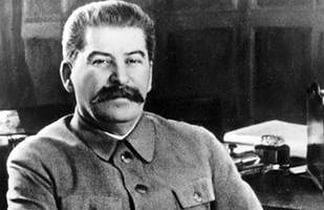
Which has no analogues in the world fifteen program of scientific control of nature, inspired by the works of prominent Russian agronomists.
According to the plan to transform nature, began a big offensive drought by planting of forest plantations, the introduction of grass crop rotation, construction of ponds and reservoirs. The strength of this plan was a single will, complexity and scale. The plan had no precedent in international experience in scale.
According to this, the majestic plan for 15 years will be created 8 large state shelterbelts total length of 5,300 kilometers, in the fields collective and state farms will be set up protective plantations with total area of 5.709 hectares and by 1955 the farms will be built 44,228 ponds and reservoirs . All this combined with advanced Soviet cultural practices ensure high and stable, independent of the vagaries of the weather crops over an area of 120 million hectares. Crop harvested this acreage, enough to feed half the world's population. The centerpiece of the plan took a field-protective afforestation and irrigation.
The newspaper "Washington Post" in 1948. quotes the director general of the United Nations for Food and Agriculture Boyd Orr, who said: "The rate of depletion of fertile soil in the United States are alarming. Approximately one quarter of the area originally occupied by arable land already devastated. Every year in this country destroyed three million tons of fertile top soil layers. " Further, the newspaper admits: "If the Cold War turned into a protracted conflict, the advances in respect of reclamation can solve the question of who will be the winner».
Few people know that the preparation for the adoption of this ambitious project was preceded by a 20-year-old practice in Astrakhan semidesert, where literally, from scratch, in 1928. Research Station was founded All-Union Institute of agroforestry, called Bogdinsko reference point. In this dying steppe, overcoming great difficulties, scientists and foresters with his hands planted the first hectares of young trees. This is where hundreds of varieties of trees and shrubs were selected tree species satisfying scientific developments and Dokuchaeva Kostychev for Russian natural conditions.
The forest has grown! If the open steppe heat reaches 53 degrees, the shade of the trees on 20% cooler soil evaporation is reduced by 20%. Observations in Buzuluk forestry winter 28-29gg showed that pine height of 7, 5metra gathered this winter 106 kg of frost and frost. This means that a small grove is able to "extract" from the precipitation of moisture a few tens of tons. On the basis of scientific knowledge and experimental work and was accepted this grand plan. One of the scientists was Vysotsky and GN Academician of the Academy of Agricultural Sciences, who has studied the impact of forests on the hydrological regime. First to calculate the balance of moisture under the forest and field, studied the effect of forest habitat and causes treeless steppes. And made a significant contribution to the steppe afforestation
The farmers and workers of forestry enterprises procured 6,000 tons of seeds of trees and shrubs. Interesting rock composition proposed by Soviet scientists: first row - Canadian poplar, linden; second row - ash, maple Tatar; third row - oak, yellow acacia; fourth row - ash, maple holly; fifth row - Canadian poplar, linden; sixth row - ash, maple Tatar; seventh row - oak, yellow acacia ... and so on, depending on the bandwidth of the bushes - raspberry and currant that will attract birds to control pests plantations.

Fig. Great Plan for the Transformation of Nature.

The purpose of this plan was to prevent drought, sand and dust storms by building reservoirs, planting of forest plantations and the introduction of grass crop rotation in the southern regions of the USSR (the Volga region, Western Kazakhstan, the North Caucasus, Ukraine). Total planned to plant more than 4 million. Ha of forest, and restore forests destroyed by the last war and negligent management.
State band had to protect the field from the hot south-easterly winds - hot winds. In addition to the state forest shelterbelts were planted shelterbelts local perimeter of individual fields on the slopes of ravines, along the already existing and newly created bodies of water in the sand (for the purpose of fixing). In addition to introduce more advanced methods of processing fields: the use of black vapor, plowed fields and stubble breaking; regular system of organic and mineral fertilizers; sowing the seeds of selected high-yielding varieties adapted to local conditions.
The plan also includes the introduction of grass farming system developed by outstanding Russian scientist Dokuchaev, Kostychev and VR Williams. Under this system, a part of arable crop rotation inoculated legumes and perennial grasses Poa. Herbs were fodder for livestock and natural means of restoring soil fertility. The plan called for not only the absolute food itself providing the Soviet Union, but also build the second half of the 1960s, exports of domestic grain and meat products. By forest belts and ponds were significantly diverse flora and fauna of the USSR. Thus, the plan combined the objectives of environmental protection and sustainable produce high yields.
Great help in disqualification runs under state protection strips, in the preparation of technical projects for the deployment of planted forests in the state and collective farms, as well as the establishment of industrial oak forests in the southeast had scientists.
In this work, organized under the overall supervision of the Academy of Sciences of the USSR, was attended by scientists over 10 scientific institutions of the USSR Academy of Sciences, Moscow and Leningrad University, 4-5 departmental research institutes, more than 10 special forest and agricultural educational institutions in Moscow, Leningrad , Saratov, Voronezh, Kiev, Novocherkassk.
In order to ensure broad mechanization of field and forest work and improve their quality in terms of was, require the Department of Agricultural Engineering, Ministry of automobile and tractor industry, the Ministry of Transport Engineering, Ministry of Construction and Road machinery and other industrial ministries with orders for agriculture, provide unconditional implementation of the established plan of production of agricultural machinery, high quality and faster development of new improved agricultural machinery and implements.
Machines have been developed for the simultaneous seven lane planting trees instead of horse-driven cultivators, for the first time, work was begun on the creation of mini tractors to work on logging sites (called - a walking tractor "TOP", with the motor 3 hp). For irrigation of vegetable crops - sprinklers KDU with independent motor. Already passed the test domestic appliances - for cleaning grain, cotton, flax, sugar beet and potatoes
For the development and implementation plan was established institute "Agrolesproekt" (now Institute Rosgiproles). In his project forests covered four major watershed of the Dnieper, Don, Volga, Urals, European Southern Russia. Execution of tasks has become a matter of the whole people. At the same time polezashchitnym afforestation had to take measures to preserve and improve high-value forests, including Shipov forest Hrenovskoy boron Borisoglebskii forest, Tula spotted, Black Forest in the Kherson region, Velikoanadolskiy forest Buzuluksky boron. Restored plantations destroyed during the war, destroyed parks.
Simultaneously with a system of shelterbelts was launched a large program to build irrigation systems. They would dramatically improve the environment, build a large system of waterways, to settle the many rivers flow, to receive a huge amount of cheap electricity use stored water for irrigation of fields and gardens.
To solve the problems associated with the implementation of the five-year plan of reclamation work, was brought Institute of Water Resources Engineers named VR Williams.
However, with the death of Stalin in 1953, implementation of the plan has been minimized. Many forest plantations have been cut down, a few thousand ponds and reservoirs, which are intended for breeding fish, have been abandoned, created in the years 1949-1955 570 forest protection stations were eliminated on the orders of Khrushchev.
Glavlit quickly withdrew the book on the Plan, the Council of Ministers of the USSR - April 29, 1953 spetspostanovleniem ordered to stop work on the creation of forest belts, their planning and growing seedlings (TSGAVO Ukraine. - F. 2, Op. 8, d. 7743, pp. 149 -150)
One consequence of the coagulation of the plan and the implementation of extensive methods to increase arable land, was that in the 1962-1963 gg. there was an ecological disaster associated with soil erosion on virgin soil, and in the Soviet Union broke the food crisis. In the autumn of 1963 disappeared from the shelves of bread and flour, became irregular with sugar and butter.
In 1962, it was announced a price increase for meat by 30 percent, and oil - by 25 percent. In 1963, as a result of crop failure and lack of reserves in the country, the Soviet Union for the first time after the war, having sold 600 tonnes of gold from the reserves, bought about 13 million. Tons of grain abroad.
As time passes, the emphasis on the political "errors" of Stalin completely gloss over this great program that partially implemented the US, China and Western Europe in the form of green skeletons created. They play a significant role in preventing the threat of global warming.
In June and July 2010 at the fields and forests of the European part of Russia struck a terrible drought. Senior officials she fell out of the blue. It was a surprise for the Russian government. As if before, in previous years, in many ways could be seen that the threat of drought is very serious, and we must prepare for it in advance. In 2009, almost as hot as today, covered part of the Volga (Tatars), Southern Ural (Bashkortostan, Orenburg region). The sun mercilessly burned out all the crops.
All of this could have been avoided in the case if it was possible to preserve the USSR, socialism and fully realize the Great Plan for the Transformation of Nature.
And now we are all reaping the benefits of this treacherous policy partocrats clique came to power, Stalin, to the achievements of socialism and now exporting agriculture products with chemical additives and GMOs.

